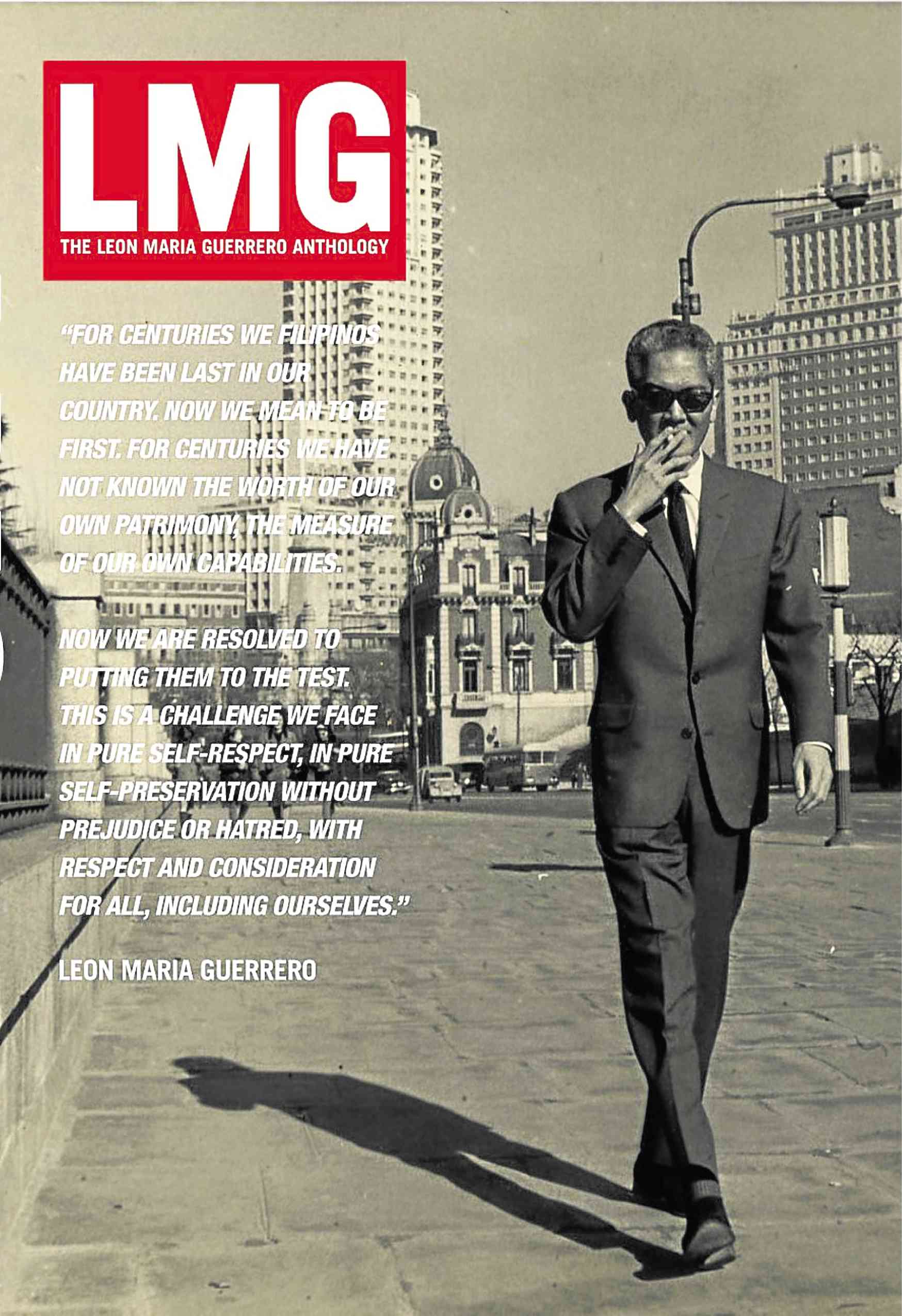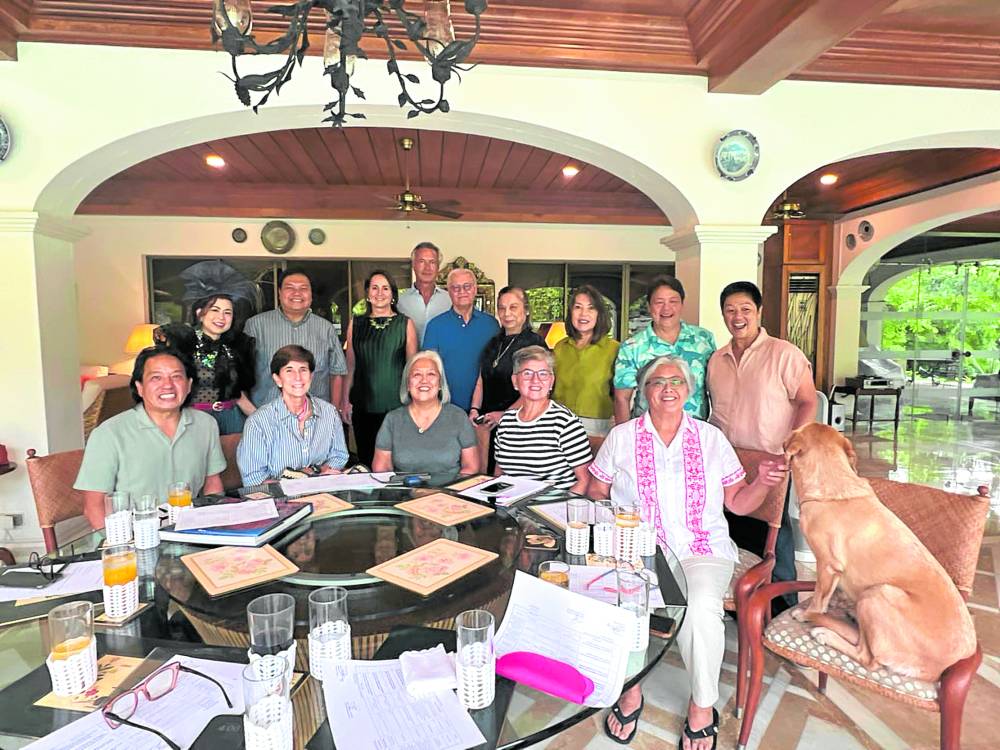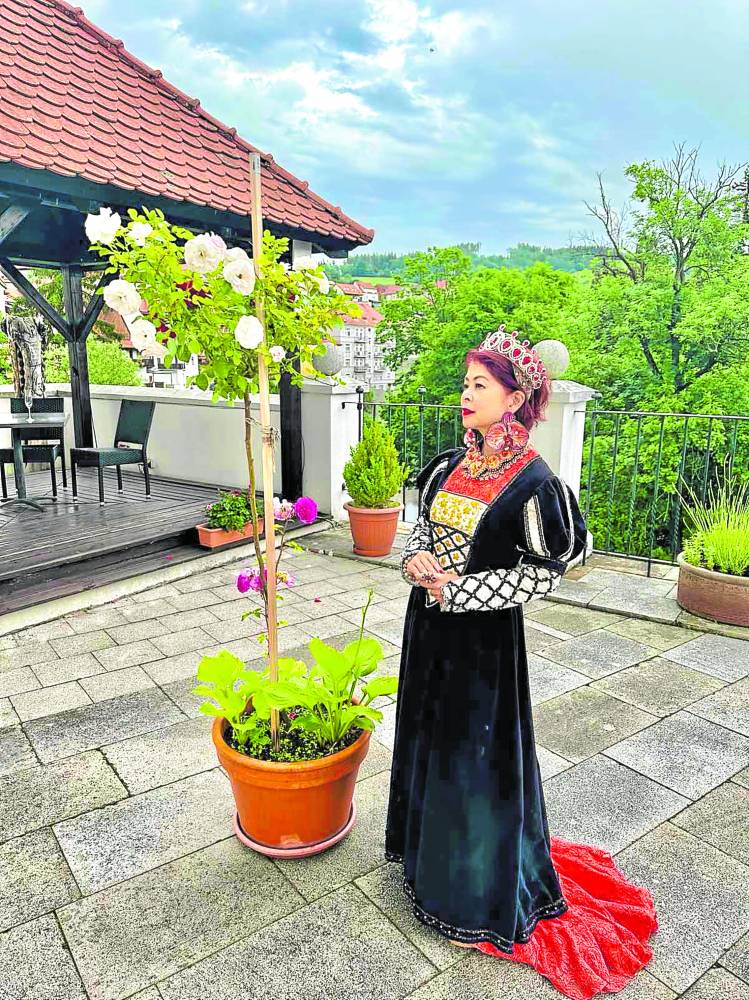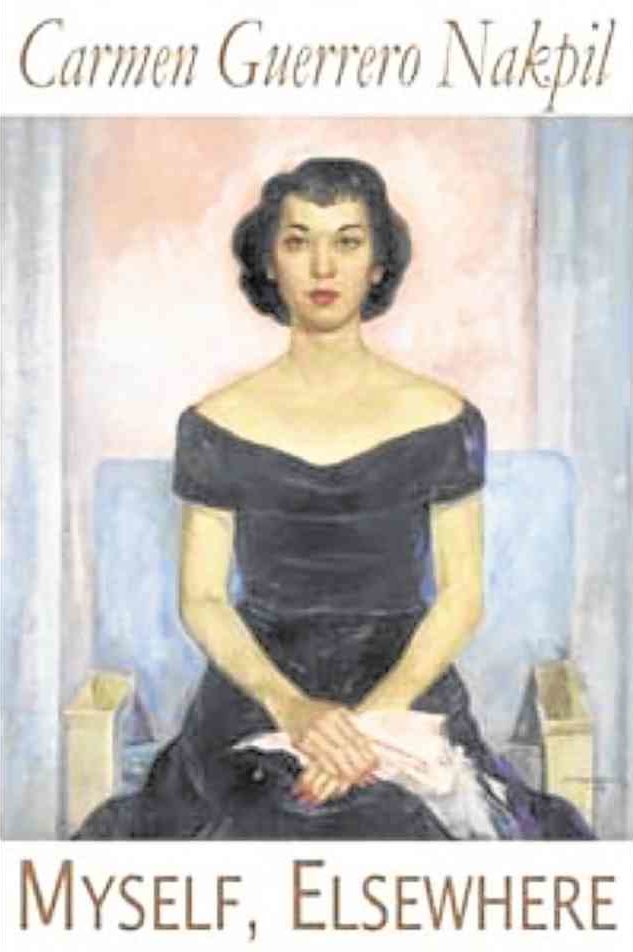
The Battle of Manila (Feb. 3-March 3, 1945), the single deadliest urban warfare fought in the Asiatic-Pacific Theater of World War II, literally annihilated the downtown area of the city and caused an estimated 100,000 noncombatant civilian deaths by ‘Sword and Fire,’ i.e., Japanese mass killings and the indiscriminate shelling of the US.”
So begins the narrative of Nakano Satoshi of Hitotsubashi University on the destruction of Manila during the World War II and the reaction of two representative members of the urban elite, the distinguished writer Carmen Guerrero Nakpil and her brother, Ambassador Leon Maria Guerrero. Not coincidentally have they been chosen to articulate (or alternatively, not to) the horror of Manila folk at the holocaust that befell their beloved city, which turned it first into a wasteland, and then after postwar reconstruction (as in the district of their youth, Ermita), into a place “tawdry and… down at the heels.”
Both were splendidly gifted—Guerrero Nakpil making her mark in her witty columns, books and a trilogy of autobiographical memoirs, and Guerrero in his prize-winning tome on José Rizal, as well as his translation of the latter’s immortal work, “Noli Me Tangere.” They belonged to the famous ilustrado Guerrero clan of Ermita, which had produced “prominent scholars, artists, doctors, journalists and even a bishop.” Who better to describe the radical transformation of Manila as a result of World War II?
Wrangling
Satoshi begins the first part of her study (published in the Hitosubashi Journal of Social Studies in January 2017) by describing the wrangling that took place between the actress-turned-photographer Gina Lollobrigida—commissioned by First Lady Imelda Marcos to write two coffee-table books on the Philippines and Manila—and Guerrero Nakpil, who had been assigned to write the introductory essays.
Lollobrigida had approached the Philippines from an Orientalist and exoticist point of view by concentrating on nature scenery and photos which highlighted the Tasadays (supposedly a prehistoric tribe discovered by Manda Elizalde, who later turned out to be a hoax), while Guerrero Nakpil insisted that the book should not be about “a Stone Age tribe in the jungles of Mindanao” but the “45 million people who don’t live in trees.”
Yet her own introduction to the two books seemed to also evade reference to the New Society as it existed in reality with its ills and flaws (expected in a “pictorial book that promotes tourism”) and did not directly mention the Philippines and Filipinos, and instead describing Manila as a reflection of places like Tahiti, New York, Las Vegas, Long Island, Palm Beach, Beverly Hills and Miami.
As Satoshi states, “The text was but a victim of the enforced euphoria of the New Society: self-hypnotized, manic and jazzy, but something was missing, giving readers a feeling of hollowness.”
Since this was not the proper vehicle for speaking about the heartbreak of Guerrero Nakpil on the death of prewar Manila, it was not till decades later—
around 60 years since the World War II—that she was to finally record in her trilogy (at the urging of her children and late writer Nick Joaquin before his passing) her impressions of the idyllic Ermita of her youth and what it had finally become, as summarized by Satoshi—the “tawdry and down-at-the-heels” largest pleasure zone of Asia… popular for its ‘sex tours.’”
Back story
The back story of Guerrero Nakpil’s Potemkin wall-like description of Manila and the Philippines during the New Society is told in her description of her own “peonage under Marcos”:
Although having been a personal friend of Ferdinand Marcos and supporting his presidency during his first term (1965-69), she was convinced to join the ranks of dissident journalists. After the declaration of martial law, however, Guerrero Nakpil decided to make a deal with Marcos to secure the release of her son-in-law, Antonio Araneta, husband of her daughter and the former Miss International, Gemma. Then she had no choice but to accept whatever assignments she was given by Malacañang Palace, such as Unesco representative, director-general of the Technology Resource Center and others.
The Guerreros have had a long and storied past of serving the Republic, including Leon Maria Guerrero Sr., who was an eminent botanist, the first licensed pharmacist in the Philippines, and a revolutionary who served in both the Malolos Congress and the first National Assembly under the Americans. The eldest son, Cesar Maria, became the first auxiliary bishop of the archdiocese of Manila, the highest clergyman among the Filipinos at that time.
The father of the two younger Guerrero writers, Alfredo Leon, was a practicing doctor married to Filomena Francisco, daughter of a Tagalog novelist and the first Filipino female pharmacologist. Her nationalism was reflected in the poems and songs with which she lulled her children to sleep, which included Rizal’s “Mi Ultimo Adios.” She became a fan of Ho Chi Minh in her later years.
No doubt, her views were to influence her son Leon Maria Guerrero. Like his poet-uncle Fernando Maria, Guerrero had literary talent that led him into journalism. As a young lawyer, he was pitted against Ferdinand Marcos in the Nalundasan case, in which the government prosecutor eventually lost to his opponent in the Supreme Court.
(Guerrero Nakpil relates an interesting tale in her memoirs, where Josefa Edralin-Marcos calls in their Ermita home on her mother, Filomena, on the eve of this case, details of which were never known.)
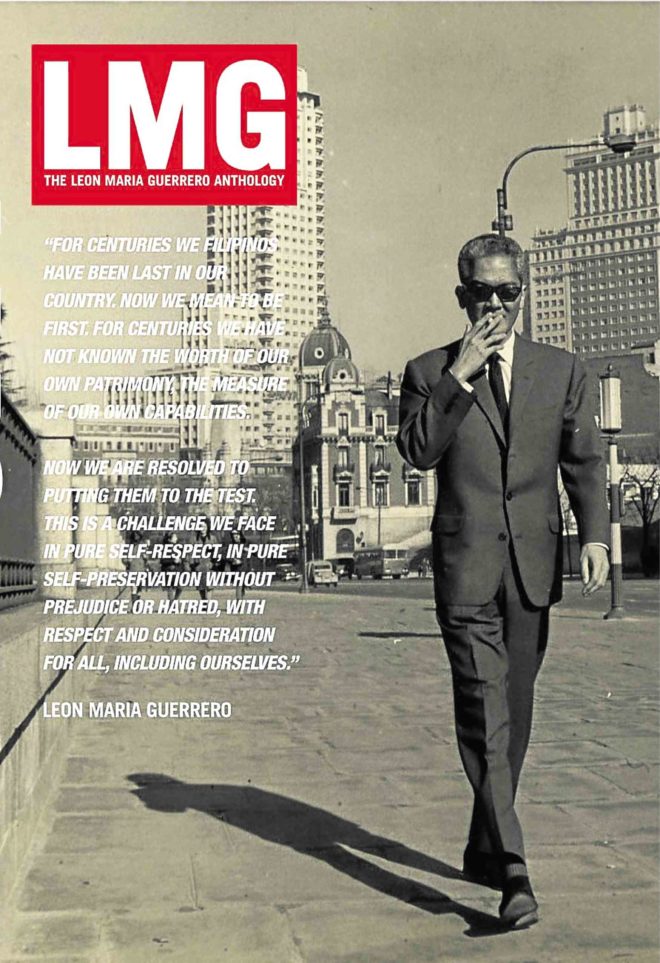
Survivor
A survivor of the Death March, Guerrero served with Jorge Vargas in the Executive Commission in the Japanese-sponsored Republic as well as in the first Philippine embassy in Japan as second secretary. At the end of the war and with the establishment of the Philippine Republic in 1946, he continued in the diplomatic service, eventually being appointed foreign undersecretary.
But in 1954, his speech on “Asia for the Asians” led to a de facto exile in Europe and India (he was also to serve in Yugoslavia and Mexico as ambassador). It was as ambassador to the United Kingdom that he was to translate Rizal’s novels.
With his mastery of English and Spanish, he was supremely qualified for this gargantuan task. No doubt, with the recent Locsin translation of Rizal’s novels, it stands as a magnificent effort to make Rizal comprehensible to a new generation of Filipinos.
However, Benedict Anderson (who originated the idea of the nation as an imagined community and cited Rizal as one of its harbingers), found that Guerrero had adopted a series of “translation strategies.” These included demodernization of Rizal’s world by dominantly using the past tense, delocalization by eliminating “as much as 80 percent of these still-recognizable place names,” as well as the names of real persons in the 19th century, and de-Europeanization by eliminating the Latin and other European vocabularies and quotes.
There are two explanations for this approach in Anderson’s view—one, “to make Rizal’s world remote and irrelevant for the present generation and conceal the original novel’s flavor of anti-establishment radicalism and actuality, which would encourage criticism of the current Republic dominated by the elite or ‘postindependence establishment,’ and two, the near-impossibility of translating the creole-mestizo world of Rizal for the American-oriented generation of the postwar years.”
One may ponder Anderson’s interpretation of Guerrero’s translation. Was it truly a Bowdlerization of the original, or simply an attempt in reaching out to new Rizal readers through a more modern, “hip” translation? What may be more plausible is what Satoshi posits—that not only the world of Rizal but also the lost paradise of prewar Ermita that Guerrero may have been, consciously or not, repressing.
Guilty conscience
It was a way of erasing memories of the past that had anchored the elite’s belief in themselves, as well as a way of life they had taken for granted. Satoshi also posits that it was a way for the elite to assuage a “guilty conscience” for the privileges they had enjoyed at nearly all points of the nation’s history, including the American and Japanese occupations and even the present.
The Ermita Guerreros were therefore on the dividing line between two cultures—on the one hand, the creole-mestizo one of their fathers, whose timeline included the Philippine Revolution against the Spanish and the Filipino-American War and, on the other, the new Yankee—influenced one of their youth.
Living comfortably in the latter world meant suppressing memories of the lost victories of the previous one. That did not mean, however, that they had forgotten it as it continued to loom as background for their writing, as well as in their respective careers.
Fil-Hispanic heritage
Especially in Intramuros, Ermita and Malate, the Fil-Hispanic heritage was still very much alive—Spanish was widely spoken, European traditions observed and English still a third language after the native patois, called lengua de tienda and the Iberian tongue.
Architecturally, this unique blend of Malay and Spanish in the bahay na bato, churches and colonial buildings combined with the American edifices in Burnham’s City Beautiful made Manila truly the Pearl of the Orient Seas. This was also the city doomed to be the battleground of the Asia-Pacific’s biggest urban conflict during World War II.
The battle began on Feb. 3 1945, “with the liberation of some 3,700 Allied civilian internees, mostly Americans, at Santo Tomas University Internment Camp in the northern part of the city.” Satoshi takes note of the US priorities: “The almost bloodless liberation was made possible through careful negotiation between the US forces and a Japanese unit, which would stand in sharp contrast to the near-total neglect of (Filipino) civilian lives in the subsequent month-long urban warfare.”
Liberation of Manila
It is noted that the elite are usually able to escape the consequences of catastrophes like war. At that point of the so-called “Liberation of Manila,” it was not possible: The privileged and the affluent—including European foreign nationals and even Germans and neutral Spanish—could not escape the atrocities and were even targeted by the Japanese soldiers.
In the Intramuros and Ermita/Malate districts, the people were indiscriminately targeted on the streets from both sides, such as Elpidio Quirino, the second President of the Philippines, who lost four out of seven of his family. In the Manila Hotel and Bayview Hotel, Japanese officers disproportionately targeted women with Caucasian complexions, especially those girls who were young and thus were assumed to be virgins, as rape victims.
In 1967, Guerrero Nakpil echoed the horrors of these reports published in 1945, but from her own pained recollections that she had kept to herself for two decades:
“I had heard the screams of the girls I had grown up with as they were dragged by the Japanese toward the Bayview Hotel (to be raped, as we later found out), and the mindless groans of the men, tied together by the elbows and machine-gunned by stony-faced Japanese. I had seen all the unforgettable, indescribable carnage caused by the detonation of bombs and land mines on the barricaded streets of Ermita and the carpet-shelling by the Americans which went relentlessly on, long after the last Japanese sniper was a carcass on the rubble.”
Then married to Ismael Cruz, a grandnephew of Rizal, Guerrero Nakpil herself was a victim of these barbarities. Living in the house of her in-laws in the Paco district, she witnessed all the menfolk in the house, including her husband, taken away to be executed in an unknown place (now thought to be the Masonic Lodge in San Marcelino).
Harrowing
Her return to her own parents’ home in Ermita, one of the early casualties of American shelling, was no less harrowing, since she spent 10 days of horror with her baby Gemma, “trapped between Japanese atrocities and American shelling” (sword and fire). Fortunately, her parents were still both alive, but this experience brought forth an “anti-American woman suffering from post-traumatic stress disorder” who could not stomach the sight of a Japanese. It is her written testimony, as well as her brother’s recollections, which stand as a poignant reminder of the death throes of Manila in 1945.
Her brother Leon was repatriated from Japan in July 1946 and saw the devastation of Manila from the air. He remembered as he saw the view from the plane:
“Manila was not dead, or what was dead of it was not yet buried, so that the returning native must endure the horror of recognizing with a start the gaunt, scarred face he remembered as once lovely. ”
Ironic
It is somewhat ironic that it has taken a Japanese scholar to piece together the fragments of memory and theorize on why Filipinos have chosen to forget Manila’s destruction in the World War II. Her story still has to be corrected and completed by Filipinos, as when she states that Intramuros, Ermita and Malate were the “downtown district.”
In truth, these were mainly residential and uptown, even when there were many tiny shops among the houses. North Manila, as in Quiapo, Sta. Cruz and Binondo, was Manila’s “downtown” with Escolta, Quezon Boulevard and Avenida Rizal as principal streets. South Manila, as in Intramuros, Ermita and Malate, was the preserve of the “urban elites,” an upmarket enclave similar to Makati, Bonifacio Global City and Alabang today.
The topic of the World War II is not taught in Philippine schools, and it was only in recent years that the survivors of that Holocaust have chosen to commemorate it with such markers as “Memorare Manila in Intramuros.” There is no tolling of church bells nor the shrilling of ship horns to mark either Feb. 3 or March 3, 1945, as the beginning and end of “Sword and Fire.” One only hopes that since the unspeakable has now been spoken of, that we will all remember those fateful days as Manila’s primordial death, and inspire us toward its resurrection.

